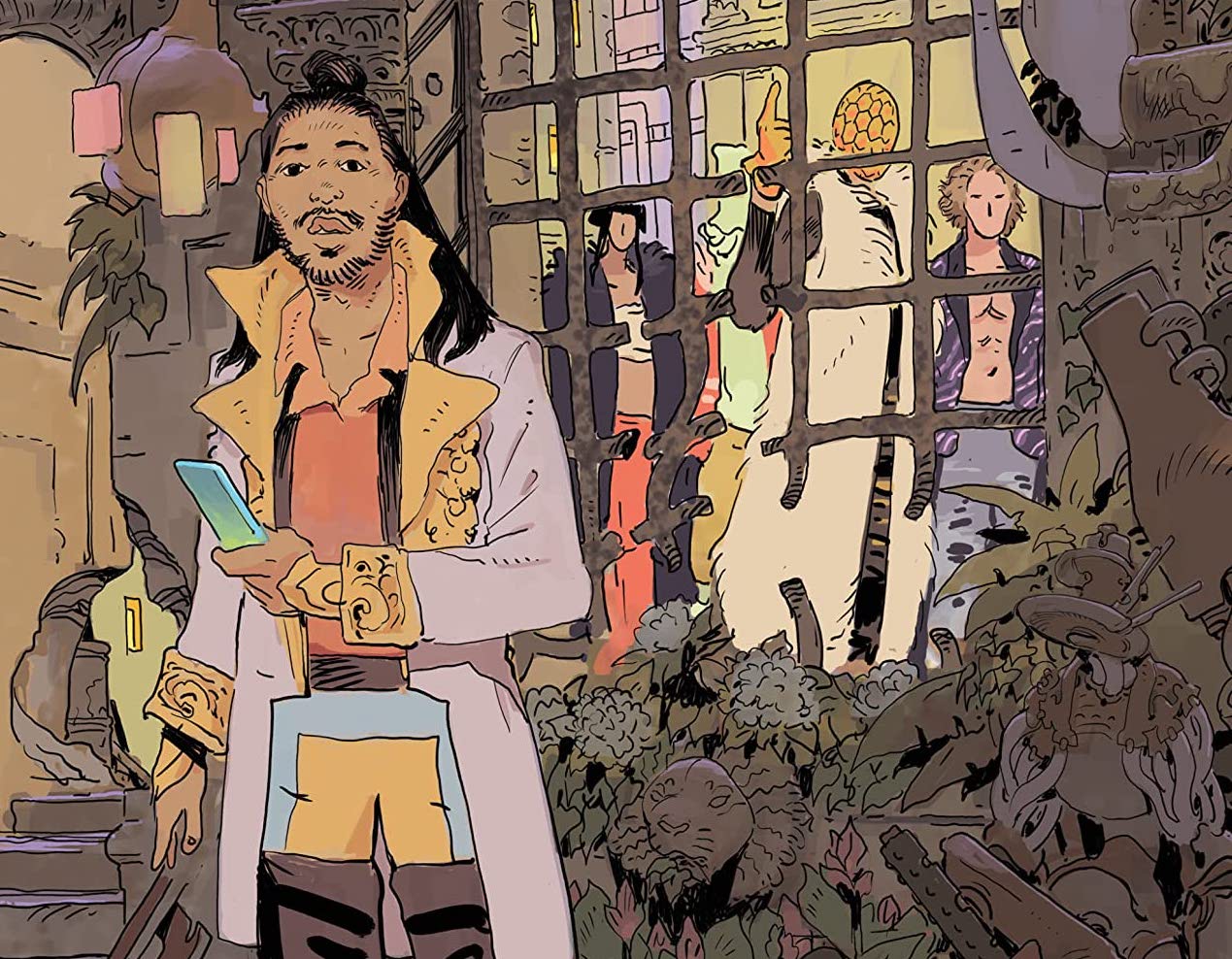To read Tartarus is to enter a climate of perplexity: an intimate character moment is followed by a hardcore sci-fi trope. The book’s creative team is a monumental powerhouse in their execution, especially some of the best storytellers within comic books. The lines they weave and thread together create this fantastical tapestry that manages to offer a fine landmark into the comic book medium. They delight in the production of these panels that wonderfully echo Jodorowksy, Herbert, Hickman, space operas and Asian historical dramas.
Johnnie Christmas has continuously produced stellar quality within all of his works. Taking the helm of writer and co-creator of this series, he brilliantly expounds on the sci-fi genre by blending Middle Eastern culture alongside a wonderful realism compacted within the guise of a hardcore sci-fi. He balances the rich world-building with a composite of proper characterization that allows for this series to maintain its explorative nature. This issue allows itself to grapple readers with its intricate plotting, but still yield for a joyful reading experience. Christmas ensures that each issue is not just complex, but fun to read.
Jack T. Cole imbues a majestic Asian futurism that makes readers look in awe of each panel. The character designs in this issue are by far some of my favorite images I’ve had the pleasure to read within comic books. All of the lines hold this wonderful life in their figures, each allowing for a distinct, aesthetically visual image. Each of the pieces in terms of set are reminiscent to H.R. Gieiger designs alongside different compositions of Möbius. Each issue of this series has been reminiscent of underground French comics in their aesthetic. But despite these European visual flourishes, Cole imbues an Asian aesthetic that makes it feel like a whole world of its own.

Image Comics
The best complement to the art and writing is the simply beautiful expertise in craft achieved by letterer Jim Campbell and designer Ben Dider. They really allow for a fluid cohesion of this whole world, and allow for the belief in the technicalities of this book. Campbell’s unique lettering and captions bring in a sincere film aesthetic. The lettering never gets in the way, but more so allows for it to embody its own sound through the additional onomatopoeia. Going further are the rich designs by Ben Dider, whose aesthetics simply render this book as something foreign and intimate. Despite how simple the larger visuals of his designs are, he continuously adds a flourish of Asian cultural touchstones within a layered geometry. Looking at his designs remind me of something I would see in a historical museum.
As always, each issue ends with a nice four page segment of the mini-comic LIFE by writer (and editor of Tartarus) Stephanie Cooke with artist/colorist Megan Huang. This really is always a nice treat to have with each book, mainly because it’s so nice to have more pages for my measly four dollars. The artwork by Megan Huang is outright beautiful and is simply a joy to see. It is simple but compactly beautiful in how it visualizes this unique aspect of nature itself. For reading a story that is out of this world, it’s nice to meditate on a narrative that simply brings us back into the joys of ours.
Christmas and Cole have made each issue a genuine joy to read. It’s simple storytelling, but holds itself atop complex crafting that brings this fluidity. If you haven’t picked up this series, start buying it, because it’s so worth the money.
Join the AIPT Patreon
Want to take our relationship to the next level? Become a patron today to gain access to exclusive perks, such as:
- ❌ Remove all ads on the website
- 💬 Join our Discord community, where we chat about the latest news and releases from everything we cover on AIPT
- 📗 Access to our monthly book club
- 📦 Get a physical trade paperback shipped to you every month
- 💥 And more!













You must be logged in to post a comment.